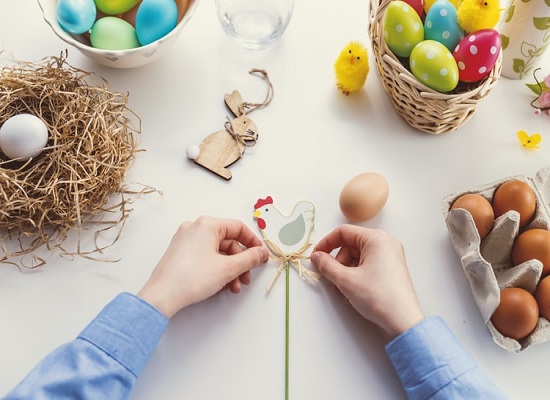
Here’s how to go about it:
1. Talk To Your Doctor Before Swapping Your Feeding Routine
If you’re having trouble with breastfeeding or are planning to transition from breastfeeding to bottle-feeding for some other reasons, ensure you consult with your doctor or nurse to discuss the best alternatives.
Together, you can then come up with a feeding plan that will work with your schedule and abilities, and the baby’s may-be preferences.
Your doctor might encourage you to continue to try to breastfeed in addition to feeding a bottle. He/she can also give you tips on pumping breast milk to put in a bottle.
2. Wait Until Your Baby Is At Least 3 Weeks Old Unless Directed By Your Doctor
Breastfeeding experts recommend waiting until you’ve been breastfeeding for about a month before you introduce a bottle.
Give your baby time to get used to breastfeeding and establish a feeding routine before you introduce them to the bottle.
But anytime you decide to introduce a bottle consult your doctor about the best way to do so.
Depending on your baby’s perceived preferences, you may have to start with tube or spoon-feeding before working your way up to a bottle.
3. Feed Your Baby Breast Milk In A Bottle First, If Possible
Offer a bottle of breast milk first, then introduce a bottle of formula if your baby.
The taste of the breast milk will be familiar, thereby helping your baby adjust to the new feel of the bottle more quickly.
From there, you can then start offering a bottle of breast milk mixed with formula, alternatively.
The way about this is to mix enough formula with a bottle of the breast milk you have until you have the amount your pediatrician recommends your baby eats.
This is another way to help your baby get used to the taste of the formula.
When your baby accepts the bottles mixed with formula, you can start gradually increasing the ratio of formula to breast milk, until your baby drinks bottles of just formula (if you want).
For example, if your baby accepts a 50/50 mix of formula/breast milk, offer that for a week. Then the next week, offer a 75/50 mix.
4. Choose Suitable Bottle Formula
Be rest assured that not every type of formula is a good choice for every baby. So, talk to your doctor if you aren’t sure which one to use.
For example, the milk-based, iron-fortified formula is what most pediatricians recommend until age 1.
Also Read: What To Pack In Your Baby’s Bag For Creche
The hydrolyzed formula is also much recommended as it is easier to digest, although more expensive.
Soy-based formulas are a great option too since they are so different from animal-based formulas, however, they are often not recommended unless the infant has allergies.
Note that special formulas will be recommended if the child has any metabolic disorders or similar conditions.
5. Start Small, Bump Up The Amount Of Formula You Feed Over Time
For a young baby of about 4 weeks old, start with 1 ounce (28 g) to 2 ounces (57 g) every 3-4 hours, or on-demand. Then, increase the amount over time as your baby grows.
A good rule of thumb is to get your baby’s weight and multiply it by 2.5. This number equals the approximate number of ounces your baby will eat in a day (24 hours).
For example, a 10-pound baby could take 25 ounces (710 g) of formula in 24 hours.
PS: Your baby may not finish the same amount all the time. So, don’t force them to eat the full amount if they don’t want to.
6. Offer Formula At Different Temperatures To Find What Your Baby Prefers
Start with a bottle of formula at room temperature. If your baby does not seem interested, warm it in a bottle warmer and give it another go.
PS: It is not advisable to warm bottles of formula in the microwave.
The reason is that it may heat unevenly i.e., even if the bottle doesn’t feel hot to your hand, the formula might scald your baby.
7. Experiment With Different Nipple Types
Thanks to 21st-century innovation, you can basically offer any bottle nipple to your baby.
You will find many varieties in stores, and you can experiment with different ones until you find one that your baby seems to prefer.
Have you read: Postpartum Weight Loss: How To Lose Baby Weight
For an easier transition from breastfeeding to bottle-feeding, it will help to get nipples that are somewhat more “natural” or closer to a mother’s breast, although this doesn’t necessarily mean that your baby will prefer them.
Again, many nipples express milk faster than a breast would. Offering a “slow flow” nipple to your baby at first can help make using a bottle safer and more comfortable.
8. Interact With Your Baby While Feeding
Make eye contact, talk to them, sing to them, and make skin-to-skin contact with them while they’re eating.
You can hold your baby in your uncovered arms or against your bare chest while feeding them formula.
This will mimic being close to the mother’s breast, helping the experience feel more familiar.
Besides, bonding with your baby while they eat is a natural part of mother-baby familiarity and a good experience that will help with the transition from breastfeeding to formula.
Find more childcare resources here.



